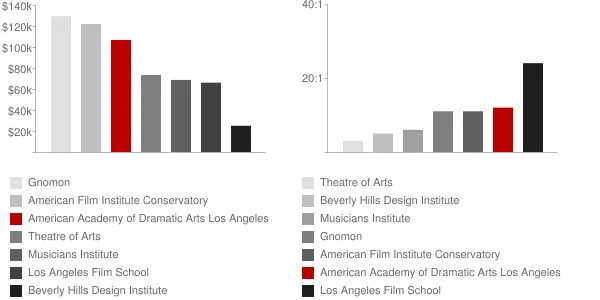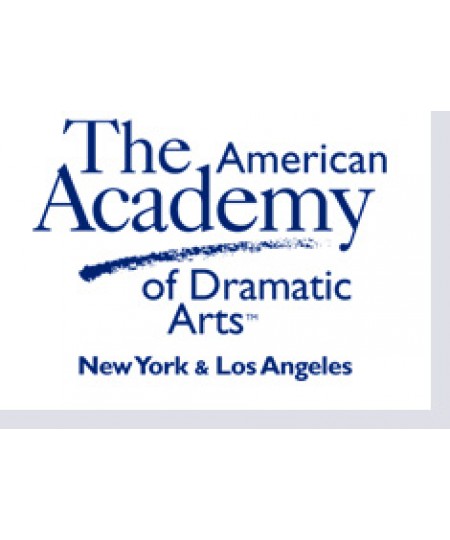American Academy Of Dramatic Arts Ranking

The American Academy of Dramatic Arts (AADA), a venerable institution for aspiring actors, consistently sparks curiosity regarding its standing among drama schools. Despite its rich history and notable alumni, AADA does not participate in traditional ranking systems employed by publications like U.S. News & World Report. This raises questions about how its reputation is perceived and evaluated within the performing arts community.
Understanding AADA's position necessitates considering its unique focus and the criteria used by ranking systems. While many universities offer comprehensive theatre programs encompassing academics and performance, AADA is primarily a conservatory. This difference in educational philosophy impacts its suitability for ranking methodologies that prioritize research output, faculty publications, and broader academic resources.
Understanding the Absence of a Formal Ranking
The absence of a formal ranking for AADA stems from its distinct educational model. Unlike universities offering diverse theatre arts degrees, AADA centers on intensive, performance-based training. This concentrated approach equips students with practical skills for immediate entry into the entertainment industry.
Ranking systems often rely on metrics such as faculty research grants, student-to-faculty ratios across entire departments, and endowment size. These benchmarks are less relevant to a conservatory like AADA, which prioritizes industry connections, performance opportunities, and individualized coaching from working professionals.
Reputation and Industry Perception
Despite the lack of a numerical ranking, AADA maintains a strong reputation within the acting profession. The Academy boasts a distinguished list of alumni, including Robert Redford, Anne Hathaway, and Danny DeVito, who have achieved significant success in film, television, and theatre. Their accomplishments contribute to the Academy's prestige and name recognition.
Industry professionals often assess acting programs based on the preparedness of graduates and their ability to seamlessly integrate into professional productions. AADA's emphasis on practical training and performance experience aims to provide students with precisely these skills, making its graduates attractive to casting directors and producers.
Alternative Measures of Success
For prospective students, alternative measures of success can offer valuable insights into AADA's effectiveness. These include audition success rates, the number of graduates securing representation with agents, and the frequency with which alumni are cast in significant roles.
Attending showcases and networking events where AADA students perform can provide firsthand impressions of their talent and training. Speaking with current students and alumni offers additional perspectives on the program's strengths and weaknesses.
The Conservatory Approach: A Closer Look
The conservatory model at AADA is designed to immerse students in the craft of acting. This intense, hands-on approach involves rigorous training in voice, movement, scene study, and improvisation.
Students benefit from working closely with experienced faculty who are often active professionals in the entertainment industry. This direct connection to the working world provides valuable insights and networking opportunities.
Impact on Aspiring Actors
For aspiring actors, the decision to attend AADA involves weighing the benefits of its conservatory approach against other options. While a traditional university program may offer broader academic exposure, AADA provides a focused and accelerated path to professional acting.
Ultimately, the "best" drama school is subjective and depends on individual goals, learning styles, and career aspirations. Researching program curricula, faculty backgrounds, and alumni outcomes is essential for making an informed decision.
Choosing the Right Path
Consider your preferred learning style. Do you thrive in a hands-on, immersive environment, or do you prefer a more academic and theoretical approach?
Examine your career goals. Are you aiming for immediate entry into the industry, or are you interested in exploring other aspects of theatre and performance?
Engage with current students and alumni. Their experiences can offer valuable insights into the program's strengths and weaknesses, and help you determine if it's the right fit for you.
Conclusion
While the American Academy of Dramatic Arts doesn't participate in conventional ranking systems, its longstanding reputation, distinguished alumni, and conservatory-style training continue to attract aspiring actors. Potential students should consider the Academy's unique approach and assess its alignment with their individual goals and career aspirations. The absence of a numerical ranking should not overshadow the importance of factors like industry connections, performance opportunities, and the overall preparedness of graduates for the demands of a career in acting.












![American Academy Of Dramatic Arts Ranking NYC: Revisiting The American Academy Of Dramatic Arts [ Being Ron ]](https://blogger.googleusercontent.com/img/b/R29vZ2xl/AVvXsEi-hxJwp76zRxZx4kmCeFSEupBMYNfwJeGUDOc4Q96_x8Utxt101nPVnU3UNHSAxM8vRtQCVQjWQakEtvGjvqd7J_OlGBeNf50DgFWhTGFmkXIu-OI-o1OKoHAbR12lV2bJoGyRcuOfFm8/s1600/093.JPG)





